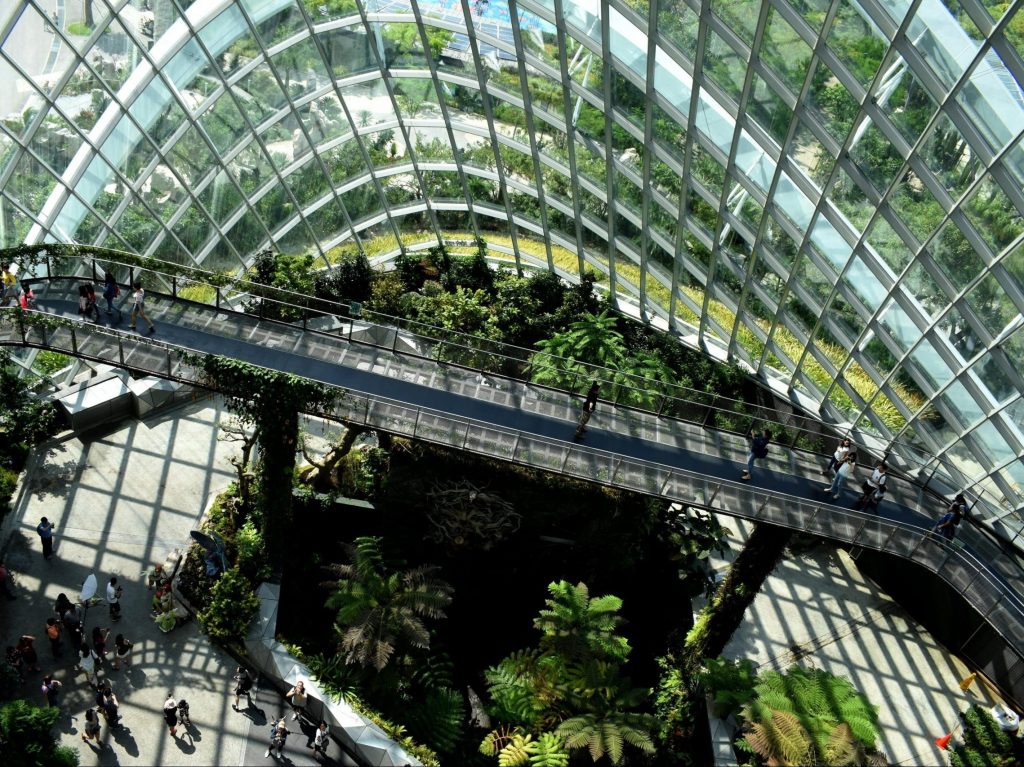Structural steel can be made with basic oxygen steelmaking (BOS). It can also be produced using electric arc furnace (EAF) production. Steel is infinitely recyclable and both methods use recycled steel.
One of the differences is that BOS steel is predominately made from raw materials. The BOS process combines iron ore with coke and about 10 to 20% in a blast furnace.
On the other hand, EAF steel is more environmentally friendly. It is made from scrap steel, as opposed to raw or virgin materials. The 100% cold scrap is melted in an electric arc, creating up to 150 tonnes of steel in one ‘melt’.
Both types of structural steel have sustainability credentials
Each method uses recycled steel and creates valuable by-products alongside producing structural steel, which is highly durable and 100% recyclable. Read our article BOS EAF in steel manufacturing to see the differences between the two methods. The article also explains how LCAs take into account carbon credentials during production, construction, use and end-of-life.
2050 decarbonisation roadmap
The BCSA roadmap to structural steelwork decarbonisation underpins 6 key areas.
1 Design efficiency
Designing to allow for adaptability and flexibility with the future in mind. For example, open floorplate designs make an adaptable layout.
2 Circular economy
Steel already plays a part in the UK’s circular economy, with 99% of it recovered through a well-established scrap network. This makes it naturally amenable to a circular economy.
3 Direct steelmaking emission reductions
EAF manufacturing has fewer emissions than using a blast furnace. We buy steel directly from the mill, rather than a stockholder. This helps to guarantee the quality of the manufacturing process. It’s worth noting that test certificates often arrive with the invoice, which can be 4 weeks after you place an order. By then, the steel is already on site, so if there is an issue with sustainability credentials, it’s often too late.
4 Decarbonisation of the electricity grid
Industrial decarbonisation, including steelmaking, requires clean electricity. By 2050, the UK electricity grid will be almost decarbonised in line with the national targets.
Rishi Sunak recently stated:
‘We have already cut our carbon emissions faster than anyone else in the G7. We will fulfil our ambitious commitment to reduce emissions by at least 68 per cent by the end of the decade.’
5 Carbon capture and use and storage (CCUS)
CCUS uses technologies to capture CO2 from power generation or industrial facilities. This is either reused on site, or compressed and stored for later use.
This is a highly viable solution since CCUS technologies can be retrofitted in existing steelmaking plants while newer forms of the technologies are also under development.
6 Steel transport, fabrication and erection
BCSA members measure and manage their carbon footprint using industry-approved tools and solutions. The BCSA roadmap outlines how these can be further improved, such as using renewable electricity and greener shipping methods.
Green shipping corridors were on the agenda at COP27, where there was a pledge to create end-to-end decarbonised shipping routes.
Projects cannot be 100% EAF Steel…yet
Only universal beams, universal columns and parallel flange channels are made via EAF process. All plate products, together with hollow sections (CHS /SHS/RHS) are manufactured via the BOS method.
Therefore on an average building, a maximum percentage of 60% of the structural steel frame can be produced from EAF when the above plates & hollow section quantities are taken into account.
Subscribe to the Elland Steel Newsletter for further industry insights.

